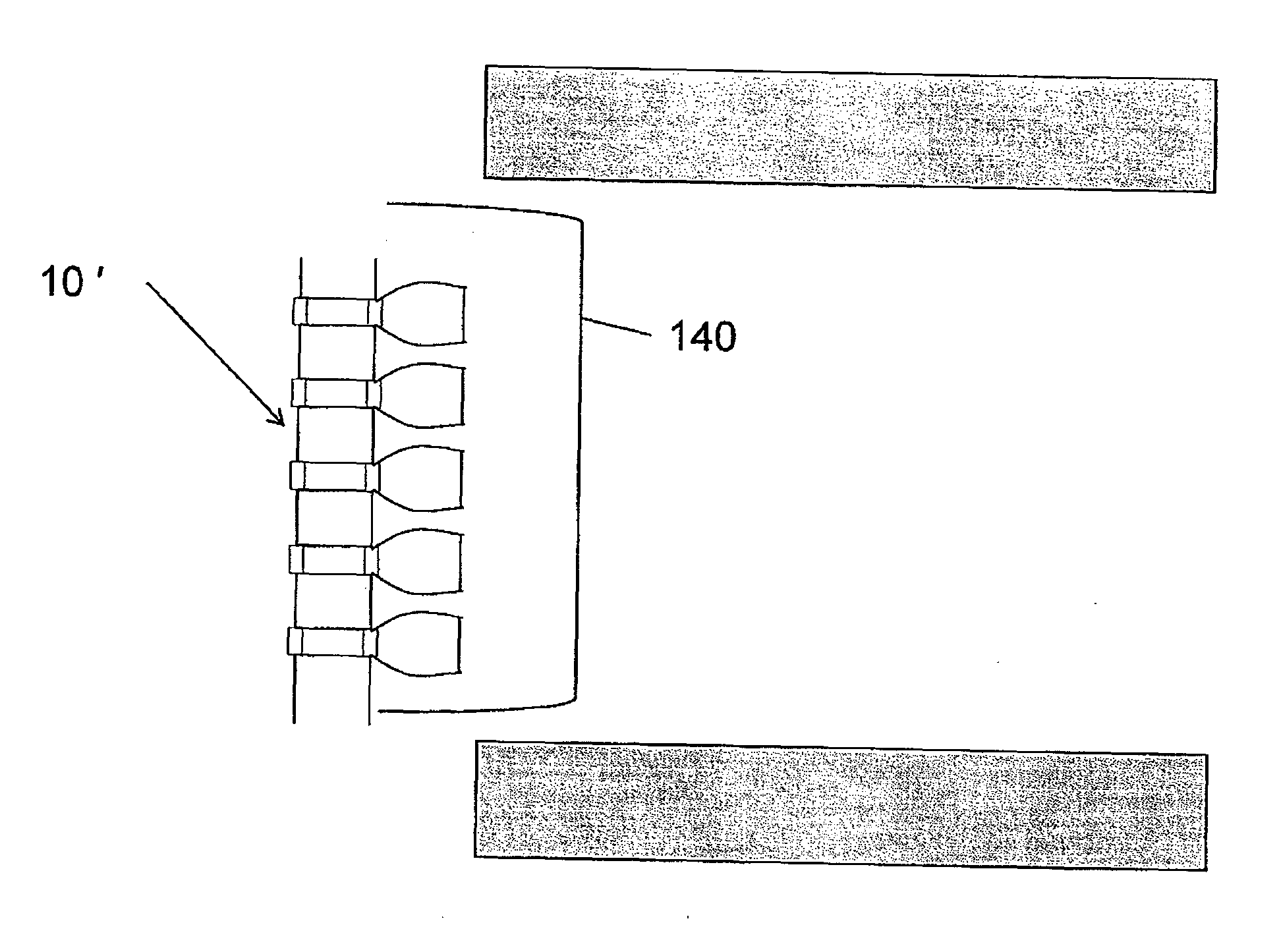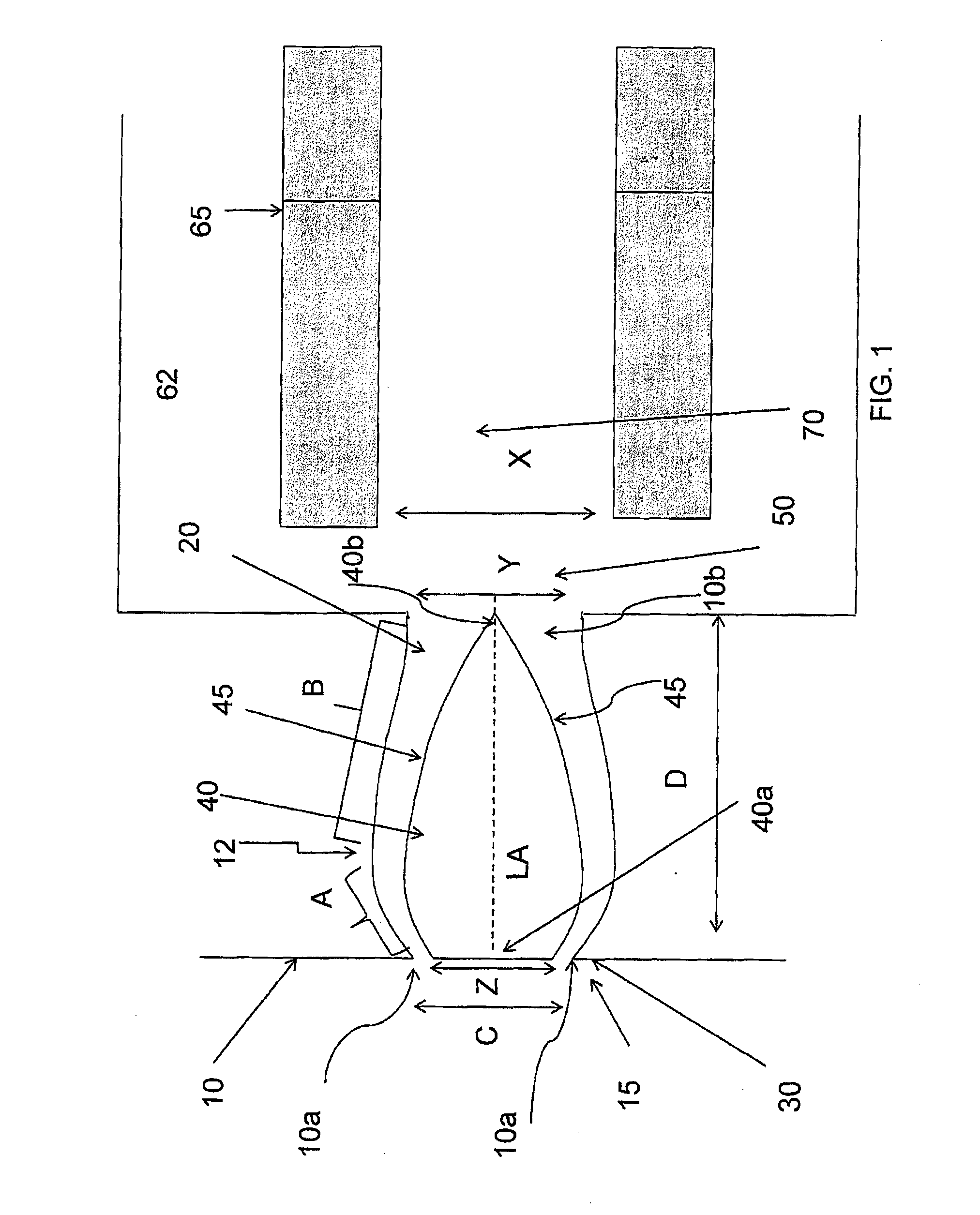Gas diffuser ion inlet
- Summary
- Abstract
- Description
- Claims
- Application Information
AI Technical Summary
Benefits of technology
Problems solved by technology
Method used
Image
Examples
Embodiment Construction
[0026]Aspects of the applicants' teachings may be further understood in light of the following description, which should not be construed as limiting the scope of applicants' teachings in any way.
[0027]This disclosure is generally directed to a gas diffuser or velocity reducer to slow the speed of a gas jet entering a vacuum chamber of a mass analyzer so that the ions carried by the gas can be more effectively focused.
[0028]In a vacuum expansion of a gas carrying ions, there is typically a need to slow the expansion speed of the gas without limiting the ion flux and without causing ion losses to walls. The latter can reduce both the sensitivity of the instrument and the precision and accuracy of the measurement.
[0029]In some embodiments, as shown in FIG. 1, a gas diffuser 10 can comprise an annular input aperture 10a that allows entry of an ion containing gas into a channel or conduit 15 that is formed between an outer curved wall 30 and a solid core 40, which provides an inner curv...
PUM
 Login to View More
Login to View More Abstract
Description
Claims
Application Information
 Login to View More
Login to View More - R&D
- Intellectual Property
- Life Sciences
- Materials
- Tech Scout
- Unparalleled Data Quality
- Higher Quality Content
- 60% Fewer Hallucinations
Browse by: Latest US Patents, China's latest patents, Technical Efficacy Thesaurus, Application Domain, Technology Topic, Popular Technical Reports.
© 2025 PatSnap. All rights reserved.Legal|Privacy policy|Modern Slavery Act Transparency Statement|Sitemap|About US| Contact US: help@patsnap.com



